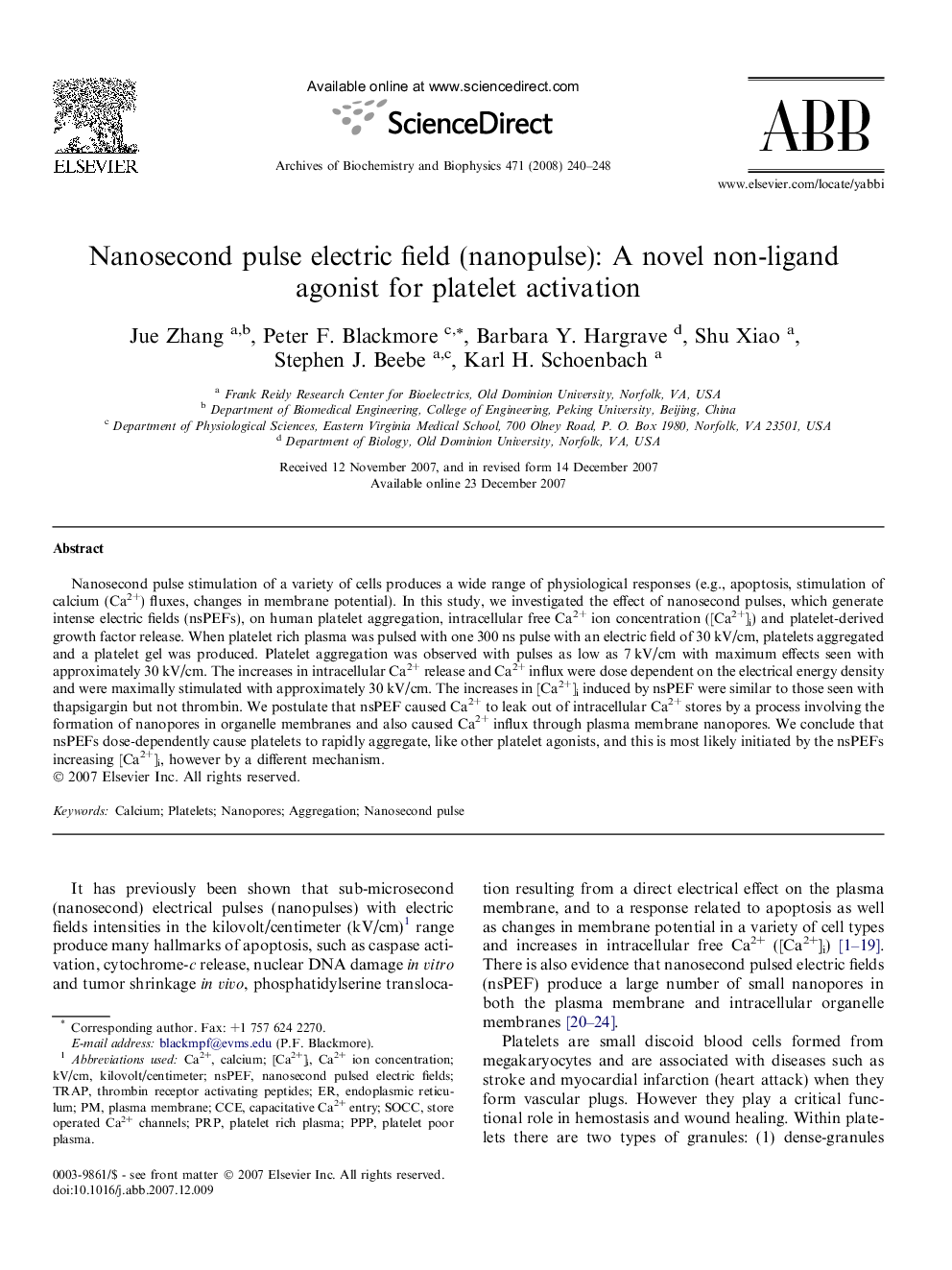| Article ID | Journal | Published Year | Pages | File Type |
|---|---|---|---|---|
| 1926745 | Archives of Biochemistry and Biophysics | 2008 | 9 Pages |
Nanosecond pulse stimulation of a variety of cells produces a wide range of physiological responses (e.g., apoptosis, stimulation of calcium (Ca2+) fluxes, changes in membrane potential). In this study, we investigated the effect of nanosecond pulses, which generate intense electric fields (nsPEFs), on human platelet aggregation, intracellular free Ca2+ ion concentration ([Ca2+]i) and platelet-derived growth factor release. When platelet rich plasma was pulsed with one 300 ns pulse with an electric field of 30 kV/cm, platelets aggregated and a platelet gel was produced. Platelet aggregation was observed with pulses as low as 7 kV/cm with maximum effects seen with approximately 30 kV/cm. The increases in intracellular Ca2+ release and Ca2+ influx were dose dependent on the electrical energy density and were maximally stimulated with approximately 30 kV/cm. The increases in [Ca2+]i induced by nsPEF were similar to those seen with thapsigargin but not thrombin. We postulate that nsPEF caused Ca2+ to leak out of intracellular Ca2+ stores by a process involving the formation of nanopores in organelle membranes and also caused Ca2+ influx through plasma membrane nanopores. We conclude that nsPEFs dose-dependently cause platelets to rapidly aggregate, like other platelet agonists, and this is most likely initiated by the nsPEFs increasing [Ca2+]i, however by a different mechanism.
